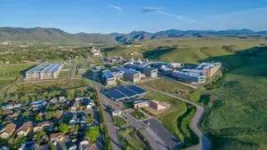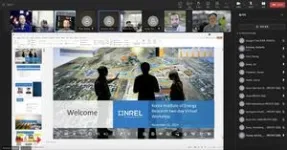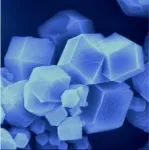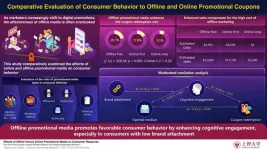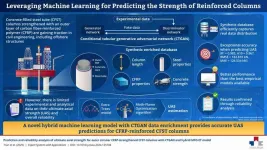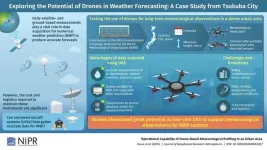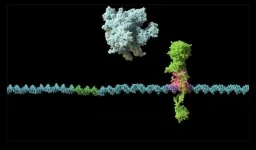(Press-News.org) The Korea Institute of Energy Research (KIER) signed a Memorandum of Understanding (MOU) with the U.S. Department of Energy’s (DOE’s) National Renewable Energy Laboratory (NREL) on January 9th to collaborate on key carbon-neutral technologies such as solar energy, hydrogen, and energy storage. The MOU was signed virtually via electronic signatures, with KIER President Chang-Keun Yi and NREL Director Dr. Martin Keller serving as the official signatories.
* NREL is a DOE national laboratory focused on the research and development of renewable energy and energy efficiency technologies, energy system integration, and sustainable transportation. NREL operates facilities like the National Center for Photovoltaics, the National Bioenergy Center, and the National Wind Technology Center.
KIER and NREL previously signed MOUs in 2000 and 2015, maintaining a close collaborative framework through online and offline workshops. Recognizing the need to establish a more systematic foundation for collaboration to yield tangible research outcomes, the two institutions signed this new MOU.
The agreement aligns with government initiatives to leverage international joint research opportunities highlighted in the Camp David Summit Declaration*. It aims to expand the joint research network with U.S. national laboratories and produce meaningful collaborative results.
* Camp David Summit Declaration: Announced on August 18, 2023, during a trilateral summit among the Republic of Korea, the United States, and Japan at Camp David. The summit emphasized comprehensive collaboration in traditional security, economy, science and technology, and global issues to create a better Indo-Pacific and global future.
Ahead of the MOU, two joint online workshops were held (June and November 2024), with an NREL expert group of 10 researchers, including Bill Tumas, NREL’s Associate Laboratory Director for Materials, Chemical, and Computational Sciences. The workshops introduced each institution's research domains, identified areas for joint research*, and discussed plans for expanded collaboration.
Key areas of collaboration include:
- Solar photovoltaics (PV) and solar resource assessment
- Codes, standards, and Techno-Economy Analysis (TEA) for sustainable hydrogen energy
- Artificial Intelligence for Distributed Energy Resources (DER) health and optimization
- Energy storage (especially Carnot batteries)
- Bioenergy
- Energy systems integration
Through the MOU, both institutions agreed to identify joint research projects in common areas of interest, hold regular workshops, and foster technical collaboration through expert exchanges.
KIER President Chang-Keun Yi remarked, “This MOU marks a new paradigm in Korea-U.S. energy technology collaboration and serves as a catalyst for securing key drivers of the future energy industry. We will strive to achieve world-class research outcomes by expanding international joint research in carbon neutrality.”
Building on this agreement, the two institutions plan to hold an in-person workshop in the U.S. later this year and initiate joint research planning, strengthening global partnerships.
END
Korea-US leading research institutes accelerate collaboration for energy technology innovation
2025-01-23
ELSE PRESS RELEASES FROM THIS DATE:
JAMA names ten academic physicians and nurses to 2025 Editorial Fellowship Program
2025-01-23
Chicago, January 23, 2025 —JAMA today announces a new cohort of ten academic physicians and nurses selected for the JAMA Editorial Fellowship Program, designed to engage early career clinical or health services researchers with JAMA’s editorial team to learn about editorial decision-making and enhance skills in scientific communication.
Fellows were chosen based on their demonstrated interest in medical publishing, medical education or research, or a career in academic medicine, as well as their communication skills and knowledge of medical research and study design.
The 2025 JAMA editorial fellows are:
Hannah ...
New study highlights role of lean red meat in gut and heart health as part of a balanced healthy diet
2025-01-23
A recent study1 from Purdue University scientists reveals following a consistent dietary pattern that features lean red meat can contribute to gut microbiota balance and support cardiovascular health.
Balanced Diets with Lean Red Meat Support Gut and Heart Health
Researchers in the study assessed the effects of adopting and then intermittently stopping a healthy U.S.-style dietary pattern that included three ounces of lean red meat (beef and pork) daily in healthy young adults, a process called, “dietary pattern cycling.”
The ...
Microporous crystals for greater food safety – ERC proof of concept grant for researcher at Graz University of Technology
2025-01-23
It is a result of his ERC Consolidator Grant-funded project POPCRYSTAL, with which Paolo Falcaro from the Institute of Physical and Theoretical Chemistry at TU Graz has now acquired an ERC Proof of Concept Grant (PoC). The new project called FRESCO, which is being funded to the tune of 150,000 euros over a period of 18 months, aims to increase food safety and reduce food waste. This is made possible by a microporous crystalline composite developed as part of the POPCRYSTAL project, which detects toxic chemical compounds that are produced when ...
Offline versus online promotional media: Which drives better consumer engagement and behavioral responses?
2025-01-23
Marketers today increasingly rely on online platforms like mobile apps, social media, and direct email to deliver promotional content, drawn by their cost-effectiveness and extensive reach. However, despite these advantages, traditional offline promotion, such as printed coupons, might still outperform their digital counterparts in driving consumer behavior.
Offline media are reported to enhance consumers’ ability to recall promotional content and improve their perception of the advertised products. Yet, a direct comparison of how offline and online promotional media affect consumer behavior has remained largely unexplored.
To ...
Seoultech researchers use machine learning to ensure safe structural design
2025-01-23
In the quest for stronger, more resilient buildings and infrastructure, engineers are turning to innovative solutions, such as concrete-filled steel tube columns (CFST) strengthened with carbon fiber-reinforced polymer (CFRP). These advanced composite structures combine the robust load-bearing capabilities and strength of CFST columns with the lightweight, corrosion-resistant properties of CFRP. The result is a cutting-edge construction material that not only enhances structural performance but also offers increased durability and reduced maintenance.
Given the potential of ...
Empowering numerical weather predictions with drones as meteorological tools
2025-01-23
Climate change is making extreme weather events worse, empowering meteorological phenomena such as storms, hurricanes, heatwaves, and droughts. Against this backdrop, numerical weather predictions (NWPs), which use complex mathematical models that simulate atmospheric conditions, have become critical to protect people and businesses from these events and other weather-borne disasters.
Unsurprisingly, NWP models need a massive amount of daily data to make accurate predictions. While some of this data comes from satellite images and ground-based stations, a fine atmospheric vertical structure ...
From root to shoot: How silicon powers plant resilience
2025-01-23
Silicon (Si) is one of the most abundant elements on Earth, found in large quantities in soil. While Si is not essential for land plants, many plants, such as rice and grasses, have used Si to develop powerful defense mechanisms against various environmental stresses. Si accumulates in plant leaves and aerial organs as amorphous silica (SiO2), which offers protection against pathogens, herbivores, and environmental challenges like drought. Understanding the processes through which plants manage this beneficial element could enhance crop resilience and productivity, especially in the face of climate change.
In a breakthrough study, ...
Curiosity- driven experiment helps unravel antibiotic-resistance mystery
2025-01-23
An international collaboration has achieved an important breakthrough in understanding the genetic mechanisms that allow bacteria to build resistance to drugs.
Bacteria have multiple defence mechanisms they can use to build resistance to antibiotics, one of the major problems facing public health globally.
One of these mechanisms involves plasmids, small DNA molecules in bacterial cells, which have their own independent genome and carry antibiotic resistance.
If we can work out the roles plasmids play inside bacteria, then we can use the information to develop a new generation of therapeutics that can target drug resistant infections.
John ...
Designing proteins with their environment in mind
2025-01-23
Proteins are life’s engines, powering processes like muscle movement, vision, and chemical reactions. Their environments—water, lipid membranes, or other condensed phases—are critical to their function, shaping their structure and interactions.
Yet many modern protein-design methods, including AI-based tools, often ignore how these surroundings influence proteins. This gap limits our ability to create proteins with new functions, slowing progress in medicine and bioengineering.
One group of proteins working in such specialized ...
Hepatitis B is a problem for a growing number of patients on immunosuppressive medications
2025-01-23
Bethesda, MD (Jan. 22, 2025) — The American Gastroenterological Association (AGA) has unveiled an updated clinical practice guideline in Gastroenterology addressing the prevention and management of hepatitis B virus reactivation (HBVr) in patients on immunosuppressive drugs. The use of immunosuppressive drugs has increased significantly since 2013, according to data gathered via the National Health Interview Survey.
New tailored risk assessments can help health care providers and patients navigate challenges posed by the newer immunosuppressive therapies used for oncology, rheumatology, and gastrointestinal diseases. As the ...

